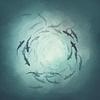You need to sign in or sign up before continuing.
Take a photo of a barcode or cover
[Note: I have since revised and expanded this review for my blog, Queer Modernisms.]
Even after more than eight decades critics and scholars still squabble over what exactly Djuna Barnes was trying to accomplish with her Ladies Almanack. Is it an affectionate satire? A bitter denunciation? A parodic exercise in self-loathing?
Maybe it's all of these things, perhaps "none of the above" gets a bit closer to the truth, but this tension touches upon exactly the thing that most compels me most about Barnes's text—it somehow encompasses nearly all interpretations but stakes itself definitively to none of them. Which makes it a superlative example of one of my current academic interests: the conveyance of queer content through "queered" form. As Barnes herself readily admitted, her Almanack was meant for "the private domaine" [sic], meant to be "distributed to a very special audience" (the reason why she never bothered to copyright the text, a decision she later regretted), if only because its subject matter—the romantic foibles of the various members of the lesbian-centered coterie Natalie Barney assembled in Paris—was enough to bring an author to public trail, as vividly displayed in the [b:The Well of Loneliness|129223|The Well of Loneliness|Radclyffe Hall|https://d.gr-assets.com/books/1415588651s/129223.jpg|1156985] which was published in the same year as Ladies Almanack, and whose author, Radclyffe Hall, who along with her longtime partner makes an appearance within Barnes's pages.
In regards to Barnes's obscure, archaic utilization of language and form in the Almanack, Susan Snaider Lanser writes that for Barnes it was "better to shroud [the overtly lesbian content] in obscurity, generating a prose whose meanings dissolve beneath a torrent of difficult words and sentences," which is exactly the thing that most readers find off-putting about the work. This isn't merely an example of willful high modernist obfuscation, and its style just can't be solely marked up as a method for eluding censorship either: it's something between, I'd argue, an attempt to avoid shoehorning queer topics and desires into traditional novelistic forms (The Well of Loneliness again, which is practically unreadable today), but instead attempts to articulate a new means of expression altogether. Barnes accomplishes this by cherry-picking elements from a variety of sources both historical and modernist, which makes it a kind of anomaly (much like her much more well-known [b:Nightwood|53101|Nightwood|Djuna Barnes|https://d.gr-assets.com/books/1298480120s/53101.jpg|828739]) within high modernist literature, of which she was one of the most prominent figures. As such, Ladies Almanack is at once both outdated and undateable, as playfully and deliberately enigmatic today as it must have been in 1928.
And hell, it's just a lot of fun.
"'The Night-Life of Love,' said Saint Musset, 'burns I think me in the slightly muted Crevices of all Women who have been a little sprung with continual playing of the Spring Song, though I may be mistaken, for be it known, I have not yet made certain on this point.'"
Source: [b:Silence and Power: A Reevaluation of Djuna Barnes|150277|Silence and Power A Reevaluation of Djuna Barnes|Mary Lynn Broe|https://d.gr-assets.com/books/1328813535s/150277.jpg|145043]
Even after more than eight decades critics and scholars still squabble over what exactly Djuna Barnes was trying to accomplish with her Ladies Almanack. Is it an affectionate satire? A bitter denunciation? A parodic exercise in self-loathing?
Maybe it's all of these things, perhaps "none of the above" gets a bit closer to the truth, but this tension touches upon exactly the thing that most compels me most about Barnes's text—it somehow encompasses nearly all interpretations but stakes itself definitively to none of them. Which makes it a superlative example of one of my current academic interests: the conveyance of queer content through "queered" form. As Barnes herself readily admitted, her Almanack was meant for "the private domaine" [sic], meant to be "distributed to a very special audience" (the reason why she never bothered to copyright the text, a decision she later regretted), if only because its subject matter—the romantic foibles of the various members of the lesbian-centered coterie Natalie Barney assembled in Paris—was enough to bring an author to public trail, as vividly displayed in the [b:The Well of Loneliness|129223|The Well of Loneliness|Radclyffe Hall|https://d.gr-assets.com/books/1415588651s/129223.jpg|1156985] which was published in the same year as Ladies Almanack, and whose author, Radclyffe Hall, who along with her longtime partner makes an appearance within Barnes's pages.
In regards to Barnes's obscure, archaic utilization of language and form in the Almanack, Susan Snaider Lanser writes that for Barnes it was "better to shroud [the overtly lesbian content] in obscurity, generating a prose whose meanings dissolve beneath a torrent of difficult words and sentences," which is exactly the thing that most readers find off-putting about the work. This isn't merely an example of willful high modernist obfuscation, and its style just can't be solely marked up as a method for eluding censorship either: it's something between, I'd argue, an attempt to avoid shoehorning queer topics and desires into traditional novelistic forms (The Well of Loneliness again, which is practically unreadable today), but instead attempts to articulate a new means of expression altogether. Barnes accomplishes this by cherry-picking elements from a variety of sources both historical and modernist, which makes it a kind of anomaly (much like her much more well-known [b:Nightwood|53101|Nightwood|Djuna Barnes|https://d.gr-assets.com/books/1298480120s/53101.jpg|828739]) within high modernist literature, of which she was one of the most prominent figures. As such, Ladies Almanack is at once both outdated and undateable, as playfully and deliberately enigmatic today as it must have been in 1928.
And hell, it's just a lot of fun.
"'The Night-Life of Love,' said Saint Musset, 'burns I think me in the slightly muted Crevices of all Women who have been a little sprung with continual playing of the Spring Song, though I may be mistaken, for be it known, I have not yet made certain on this point.'"
Source: [b:Silence and Power: A Reevaluation of Djuna Barnes|150277|Silence and Power A Reevaluation of Djuna Barnes|Mary Lynn Broe|https://d.gr-assets.com/books/1328813535s/150277.jpg|145043]
emotional
hopeful
inspiring
lighthearted
reflective
medium-paced
Plot or Character Driven:
Character
Strong character development:
Yes
Loveable characters:
Complicated
Diverse cast of characters:
Yes
Flaws of characters a main focus:
Complicated
challenging
funny
reflective
fast-paced
Plot or Character Driven:
N/A
Strong character development:
N/A
Loveable characters:
N/A
Diverse cast of characters:
N/A
Flaws of characters a main focus:
N/A
I think I mostly just didn't get it. Apparently this is a lot of inside jokes between Barnes and her friends so it makes sense that I wouldn't get a lot of it; and perhaps I need more historical context to understand the other pieces. However, the pieces that did make sense were interesting.
Fantastic! Wholly original, funny, great drawings in the edition I read...
Almanaque satírico das bobagens direcionadas para mulheres de um século atrás (ó céus, que ainda persistem!), com linguagem clássica e direcionada às "entendidas" dos salões parisienses da década de 20. Finíssimo.
challenging
funny
medium-paced
I could have used a much more heavily annotated edition. The jokes I did get were great, but there’s a lot I didn’t. It is essentially reading an almost 100 year old lesbian inside joke, so I expected it to be a bit confusing. But disappointed that this edition had no annotations or footnotes outside of the introduction.
inspiring
reflective
slow-paced
I can't say that this was a "good" or "enjoyable" read but it does end with the Natalie Clifford Barney character's tongue, which survived her cremation, placed upon an altar and still "flicker[ing] to this day'
some parts are funny and all but this wasn' the enjoyable read i thought it was gonna be. more useful as a historical tool as to understand the paris lesbos crowd a bit better, their humor and dynmic. its nice to imagine them cracking at the inside jokes. and its amazing to see this side of lesbianism so proud, lightweighted and in campy satire in contrast to radclyffe's well of loneliness from the same period. natalie clifford barney and djuna barnes were big brained for this







